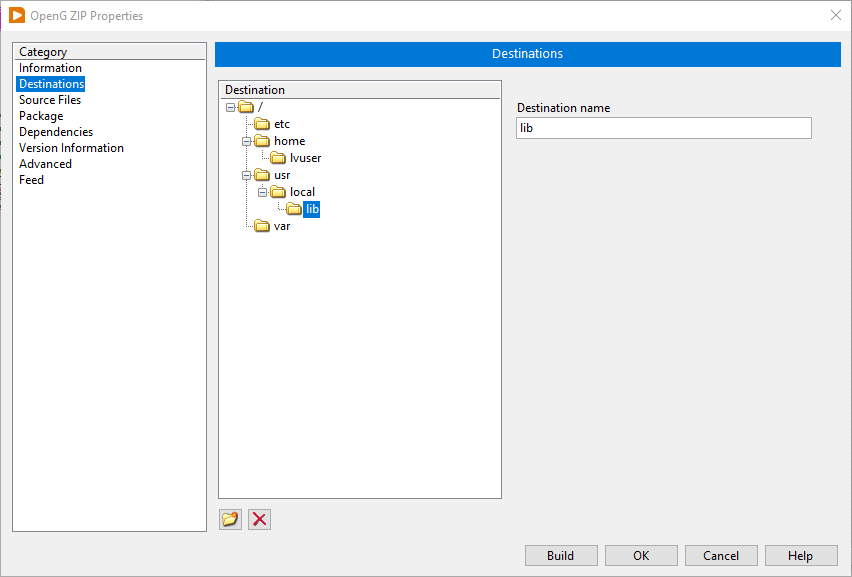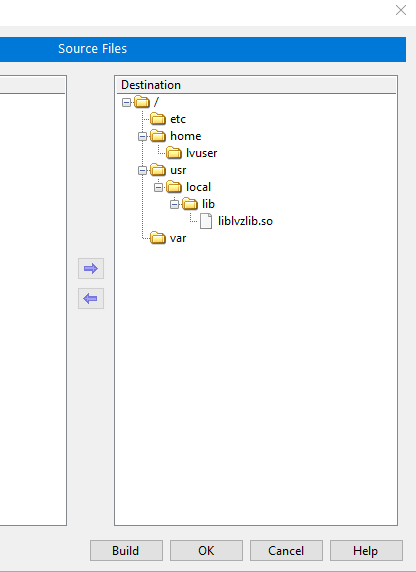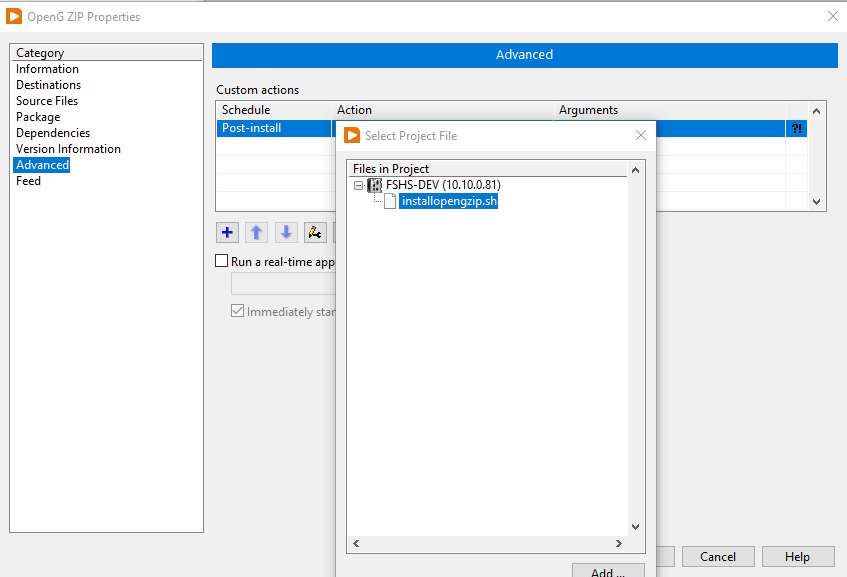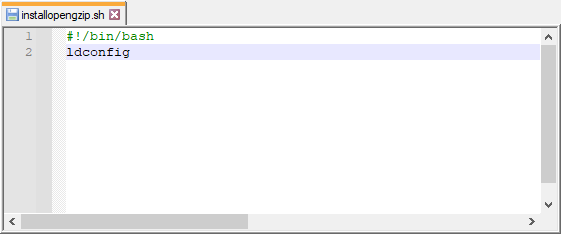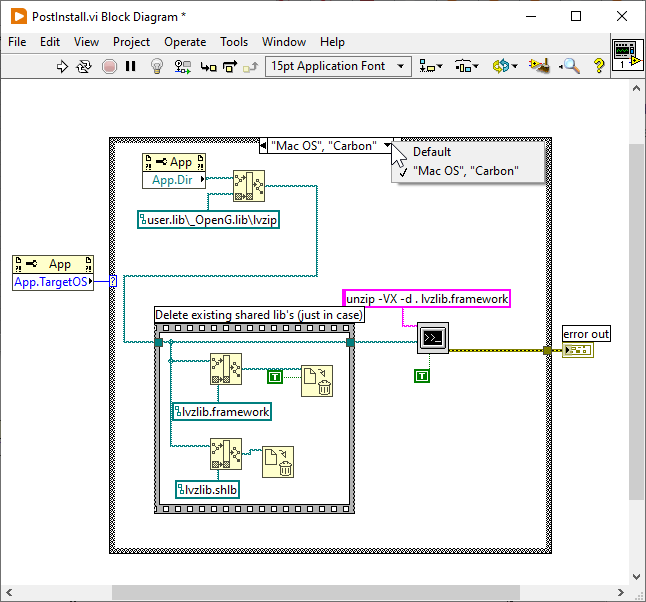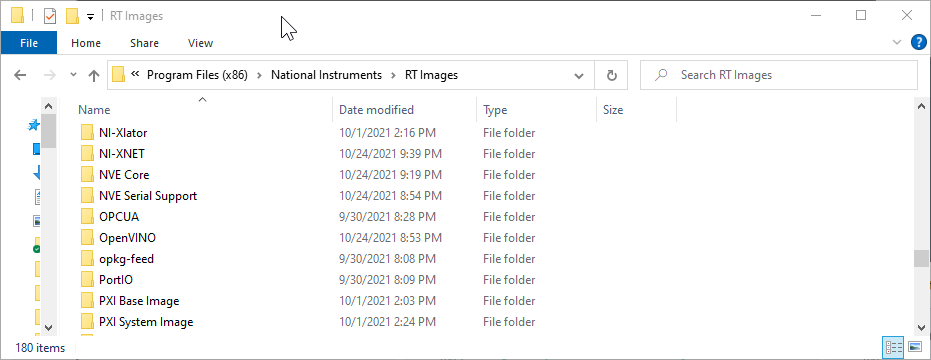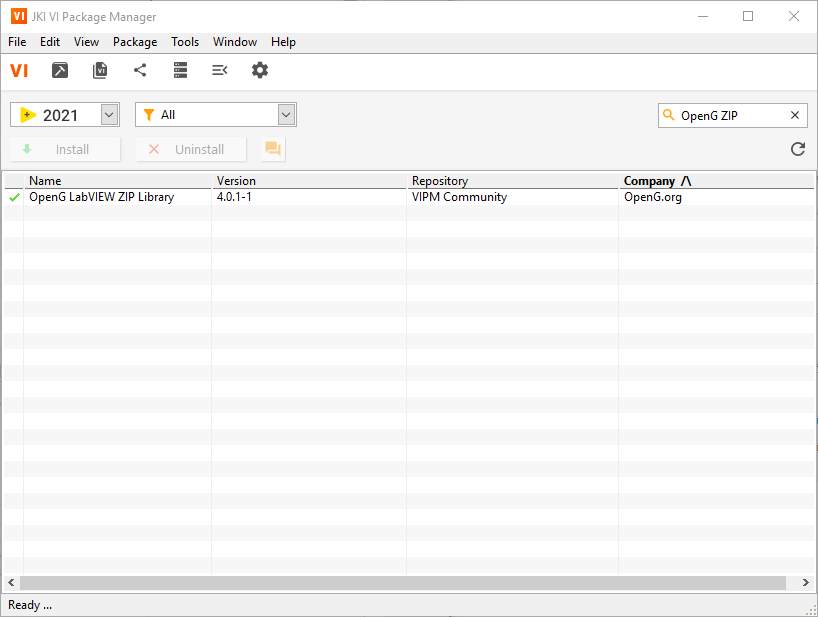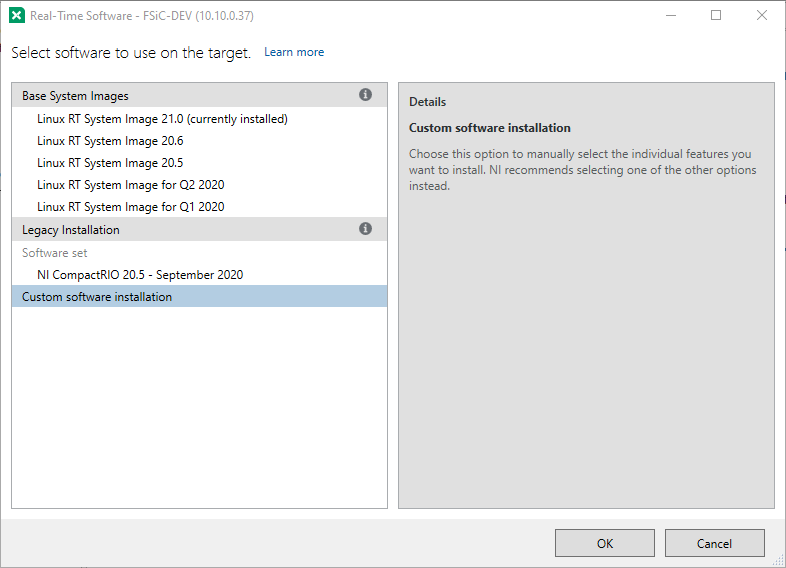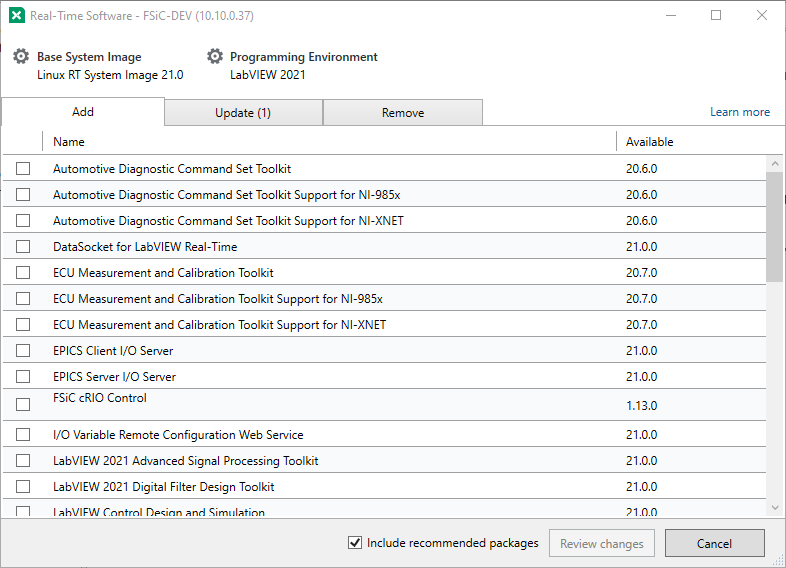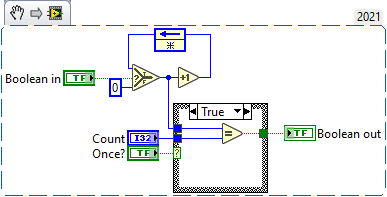-
Posts
695 -
Joined
-
Last visited
-
Days Won
21
Content Type
Profiles
Forums
Downloads
Gallery
Everything posted by Jordan Kuehn
-
Two weeks away! I assume no LAVA BBQ?
-
With packages you can include files (e.g. an installer), and put them where you want them. You can also call post-install scripts. I think if there is a way to call the installer silently from the CLI you could script this. You are starting to tread on IT's world though, but sometimes you need to get it done and for it to work so perhaps you are best off doing it yourself this way Seriously though if they have the systems in a domain or something they might be able to handle the environment setup independently of your NI packages.
-
Isn't this the case with many acquisitions by NI? Buy it up and let it languish instead of developing or integrating it?
-
You can call opkg install from the CLI and manually install a package you have copied over. Some discussion here where I built such a package. We use SystemLink which makes it easy to add the custom feeds and such, but hopefully this could help some?
-
Cross posted to the dark side. Hello, I'm attempting to work with the launch remote actor function utilizing two cRIOs. I have a working AF application on one cRIO and I would like to spawn a few Actors to run on another one beneath my original top level actor, hoping that the top level actor will be able to interact with them as if they exist locally. I have watched this presentation from JustACS and have considered using the nested endpoints, but this approach seems more "AF-ish" and doesn't require extra communication actors mid-tree, or mid -> top of tree. My question at this point is that I don't think I have the dependency injection correct for a built exe. The example doesn't seem to address applications outside the IDE either. I believe I have gotten the VI Server settings working and can launch the actor from the Server side without errors now. I encountered some errors while working on the dependency injection. Note: these are built and deployed startup exes. I first started with something like in the webcast: And here is mine: However, I encountered errors on the Server side in the upper proxy vi until I added this loop: Now the Server side launches, but I don't see any activity from my remote actors. I expect at the very least to have some of the initial logging that happens at the beginning of their Actor Cores happen, even if there are other errors, but I see nothing on the Client side. Am I missing something simple here on the dependency injection? I attempted to include just a few actors at first, and then added all the actors that could possibly be linked in some way, added subvis to the always include in the build spec, etc. Any help or pointers here would be greatly appreciated. Thank you!
-
The (advanced) software track seems light, but I'm going into this with some reasonable expectations coming out of the pandemic and also the rebranding as a smaller event. At least that's what I'm trying to do. https://www.ni.com/en-us/events/niconnect/austin.html#pinned-nav-section4
-

The first digital clock done in LabVIEW
Jordan Kuehn replied to QWERT's topic in Code In-Development
I'm hesitant to download and open/run this. Do you have some screenshots/snippets? Anything you'd like to discuss about it? -
I use this on cRIO with the system exec vi: timeout 0.1 ping -c1 127.0.0.1 Replace the 0.1 with the time you want (s) and the 127.0.0.1 with whatever IP address or hostname you want. I use this to determine if I want to attempt to open a shared variable connection to an expansion chassis since the timeouts on that API do not work.
-
I have approval for the trip and will be bringing a few other engineers. LAVA BBQ happening?
-
My simple test is quite like yours. It failed without the expected length wired. It worked with it wired. Thank you for the example. I will look into adjusting the inflate VI to auto-run a few more rounds, thank you for the suggestion. I just provided the big picture use case if the additional context might shed some light on what I'm after. Definitely working up incrementally to using it in that implementation.
-
So I just tried that without success. I had several screenshots to post of what I did, etc. and then I tried it with providing the expected length and it worked just fine. Is this input required? I read the description where you say it will work for up to 94% compression unwired. I'm compressing a JSON string of basically an array of clusters (quite compressible). Would it be disadvantageous to wire a sufficiently large constant to this input rather than bundling the actual expected output with the data? It did also work in when I tested with a large input. My use case here is to reduce bandwidth requirements when transferring JSON encoded status information via MQTT to a 3rd party system (non-LV). I hope to give them the requirement of inflating via zlib after delivery and then proceeding to use the JSON data as they like.
-
I will give it a more thorough test! I copied from one VI indicator to a constant in another application instance. I think. Knowing that it *should* work is already very helpful. Thank you both.
-
I can split this off onto another thread, but I copied a deflated string produced by Linux RT and tried to inflate it on Windows and it did not work. I took the original data and deflated/inflated all within Windows just fine. Is there a compatibility issue between the two OS implementations?
-
I agree with ShaunR. Despite it being posted as replies to several posts all in one day, I don't think it's overly spammy and they were mostly relevant to the discussions at hand. It was enough to get me to poke around at the product page and file it away in my mind should the need arise.
-
Got it! I got the files installed, put them in a package build spec in the project explorer. Configured the source file to go where you said and wrote a simple script to run the ldconfig as a post install action. See screenshots below. I installed the package and ran the same test code that errored on deployment and it worked great this time. No manual moving of libraries on my end. Package attached. Thanks for all the help! openg-zip_1.0.0-2_x64.ipk
-
I would be happy to see if I can build a package to share or at the very least move the files over to get it working in my application. However, I do not see that directory on my machine. I did reinstall while running VIPM in admin mode but still nothing. I opened the vipm package via winrar and looked around inside and this is what my post install vi looks like (I'm in Windows):
-
I do not see a way to do this in 2021. Perhaps it is because I have the Linux RT image installed and not a custom image to begin with, but right now, even in MAX, I only see the options to configure feeds and to install packages from those feeds. If a package were available or I could build my own (I’m not sure all of the details for this library installation) I can put it in my project and install it as a dependency without it being in the official NI feed. Am I missing something here? I remember the old way of installing software, but I do not see where that is available anymore. I’ll grab some screenshots when I get to my desk if that would help. Edit// I think it was like this in 2020 as well now that I’m looking back. I believe it’s the Linux RT image that switches the software installation dialog. I can play with that some too a little later today to see if I can get it working like Mads described. But that would not work long term for me since all of my development is utilizing packages (and SystemLink) now. Edit 2// Here is what I see when selecting the base system image to use. I believe if I go with the "Custom Software Installation" it will give the old method back, but that is described as "Legacy". And as you can see here, I only have the ability to add packages via the configured feeds. Some NI feeds, some my own.
-
Is this still true in LV2021 with Linux RT? I am getting the same error, but the software installer has changed in current max and utilizes packages. In opkg I see a few perl and a python zlib package available, but not lvzlib.
-
Perhaps this same issue that is a bug, per AQ's reply: https://forums.ni.com/t5/LabVIEW-Idea-Exchange/LV2021-Deactivate-Wire-Auto-Routing/idi-p/4183557
-
Thanks for the link and bringing it to our attention! I focused on this part (my emphasis added):
-
FPGA certainly. I have use for the code I posted when say thresholding a value and wanting to ensure that it has exceeded that threshold for a period. That value could be anything. A plain signal or it’s derivatives, a float switch with a digital input, etc. At high rate in an FPGA you’d normally use it for say a mechanical switch that makes intermittent contact rapidly as the contacts first come into contact with each other. I’m sure there are more examples!
-
That certainly fulfills the debounce nature in a more pure manner, debouncing both low and high. Mine is more of a conditional latch with optional single pulse output or latched high output. I think you got my point though about using a counter. As far as it being pretty or not, I don't know that I'd ever look at the BD again after finishing testing. The counts can be adjusted based on where you use it. Certainly sample rate will be a factor, but also expected noise/bounce vs desired responsiveness.
-
-
So that's what AQ means. Apprentice Questions?
-

CompactRIO launch an .rtexe from an .rtexe
Jordan Kuehn replied to foxman's topic in Calling External Code
Oh that’s perfect. Just like OP on that post it’s the reboot time that’s the issue for me. This line is what I was missing: /etc/init.d/nilvrt stop && /etc/init.d/nilvrt start I’ll give this a try. Thank you.




